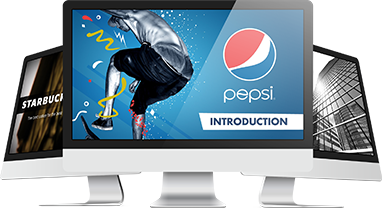Knowing your client’s business is one of the four ways to get great pitch deck ideas.
Aside from speaking to clients in their terms, impress them by doing your homework and figuring out what problem to solve.
How It Works:
1. Do a Factory Tour
Most great pitch deck ideas begin with studying the client’s product or service, a method practiced by top advertising agencies like Doyle Dane Bernbach, makers of the famous Volkswagen ads.
Getting a chance to tour your client’s stores, factories or shops works to your advantage. According to ad veteran Luke Sullivan, study every brochure, advertising and PR material, even their sales pitches if they’ll allow it.
Doing so gives you information on how to solve their existing problem or an improvement that your company can pitch.
Once you get the chance, ask every question you can:
- How are the products made?
- How are their services given?
- Who buys them?
- Are there any special ingredients or parts that make it the way it is?
Every single question gives you the answer you need for that winning sales pitch idea.

2. Study the Product or Service
Ask your client how customers behave towards their brand. As renowned author, Jim Aitchison asks, what situations do they use in your client’s products or services?
If your client is a travel agency, do people use their services to plan family vacations or business trips? Pitch for a tie-up with a hotel or resort promo.
Does your client provide companies with health insurance? Propose a partnership with a hospital or clinic.
Doing this puts you in the shoes of your client’s customers. By understanding what makes the product or service the way it is, and how the client’s customers use it, you get a clear picture of what it’s supposed to do and how your pitch can improve your client’s situation.
Look at it from every aspect before making your pitch deck. This gives you a thorough understanding that it’ll be strong enough to cut through other competitors.
The Advantage: Knowledge Is Power
Having this first-hand knowledge shows a clearer picture of what problem to solve. Knowing how your client’s business works also lets you define your pitch strategy.
Do you want to highlight how your proposal can expand your client’s current product reach? Do you want to show the benefits of your pitch over the competition’s?
Regardless of how you want to present your pitch, you’ll have more credibility if your client knows you did your research. Get help from a great pitch deck partner to make the most out of your pitch.

References
Aitchison, J. (2004). Cutting Edge Advertising: How to Create the World’s Best Print for Brands in the 21st Century. Singapore; New York: Prentice Hall.
Sullivan, L. (2008). Hey, Whipple, Squeeze This: A Guide to Creating Great Ads (3rd Ed.). Hoboken, N.J.: John Wiley & Sons.
“The Greatest Print Campaigns of All Time: Volkswagen Think Small.” Design Shack. Accessed July 2, 2015.


